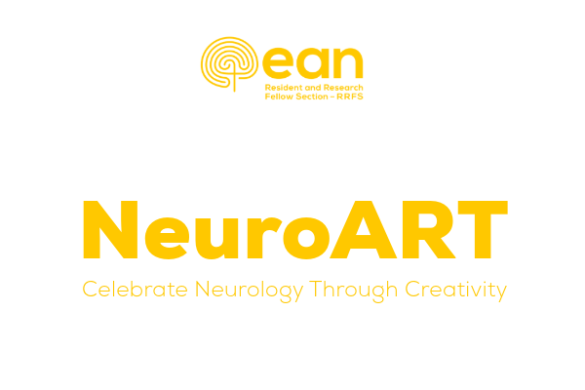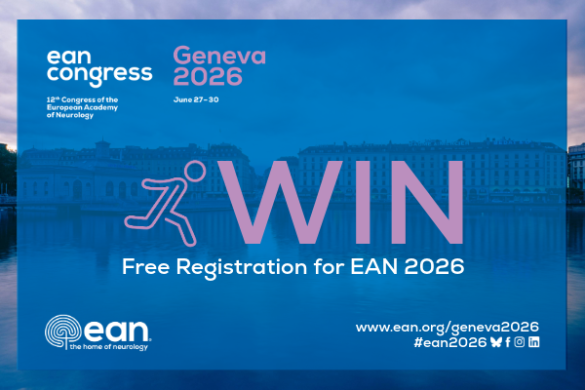by Benedetta Bodini
This interesting session covering updates on acute stroke pathogenesis and treatment started with a lecture by Dr Meinel from Switzerland, who provided a comprehensive description of covert brain infarction. He first focused on incidental covert brain infarctions, underlining that the incidental finding of an asymptomatic brain infarction is very frequent, reaching 30% in 70-year-old patients, and is even higher in patients with cardiovascular risk factors. Covert brain infarctions are mostly localised in the basal ganglia, but they can also be found in cortical and infratentorial regions. Dr Meinel then discussed risk factors for covert brain infarctions, which include carotid arteriosclerosis and atrial fibrillation, but also previous cardiac surgery and carotid endarterectomy. He then underlined that patients with covert brain infarctions are at higher risk for manifest stroke, dementia and mood disorders. Dr Meinel moved onto summarising the ESO guidelines for covert cerebrovascular small vessel disease, and indicated that an ongoing clinical trial is currently investigating whether aspirin might be beneficial for patients with different types of covert brain infarction. In the second part of his lecture, Dr Meinel discussed the interesting topic of covert brain infarctions in patients with manifest stroke, which were found in more than 37% of the patients with first-ever acute stroke included in his most recent study. He then detailed the results of this study, indicating that in his cohort several vascular risk factors were associated with the presence of covert brain infarctions, and that the etiology of the acute ischaemic stroke differed according to the presence, number and imaging phenotype of covert brain infarctions. Dr Meinel concluded by noting that chronic covert brain infarctions might potentially be used to develop individualised diagnostic work-up and specific therapeutic approaches for patients with first-ever acute ischaemic stroke.
In the second lecture of the session, Dr Li from the UK focused on the key role of hypertension in secondary stroke prevention. She first presented the results of one of her studies, where it was found that recent premorbid blood pressure control is strongly temporarily related to acute lacunar events at younger ages, and then showed that hypertension is associated with stroke recurrence specifically in lacunar strokes. Dr Li then underlined that the causal role of hypertension is not limited to lacunar events, but is critical in all major stroke subtypes. She indicated that blood pressure lowering has been shown to reduce the risk of recurrent stroke, vascular death and any other vascular event, and might also be associated with reduced risk of post stroke dementia. While both ESC/ESH and NICE guidelines indicate the need to introduce a treatment for blood pressure control in patients with an acute cerebrovascular event, Dr Li questioned the reliability of clinic blood pressure measurements, showing that her data demonstrate that there is little correlation between clinic blood pressure and home blood pressure readings, with home blood pressure readings being overall more reliable than clinic blood pressure measurements. She indicated that patients with TIA/stroke should be started on blood pressure lowering drugs (ACE inhibitors, thiazide-like diuretics, and calcium-channel blockers) within ideally a couple of days of home monitoring before treatment initiation, and showed the evidence supporting that the target systolic blood pressure is below 130 mmHg. She concluded her lecture mentioning that the results of a clinical study investigating the best timing for lowering blood pressure treatments (morning vs evening) should be available in the next few months.
In the third lecture of this session, Dr Ribo from Spain presented the results of his study which investigated whether stroke subjects with suspicion of large vessel occlusion evaluated by emergency medical services in the field have higher rates of favorable outcome when transferred directly to an endovascular treatment stroke center, despite a greater transfer time and a considerably longer delay to initiate treatment, as compared to the standard transfer to the closest local stroke center for thrombolysis followed by a second transfer to an endovascular treatment center, if needed. Over three years, more than 1,400 stroke patients were included in the study. Dr Ribo first showed that in terms of complications both options could be considered safe for stroke patients, even in the case of severe events. Patients being treated in local stroke centers for thrombolysis and then transferred to an endovascular treatment stroke center received overall a lower proportion of endovascular treatments which were also significantly delayed compared to those who were transferred directly to an endovascular treatment stroke center. Dr Ribo showed that overall, disability at three months post-stroke was not different between the two groups, but suggested that it would be important to identify patient subpopulations who might benefit from direct transfer to an endovascular treatment stroke center. Dr Rubio concluded that the presence of contraindications to thrombolysis should encourage emergency medical services to directly transfer patients to endovascular treatment stroke centers, while if the patient is likely to be a candidate for thrombolysis, and the transfer time to the endovascular treatment center is longer than 200 minutes, the initial transfer to the closest local stroke center should be preferred.
Dr Katan from Switzerland focused the last lecture of this session on the identification of underlying cardiac sources of stroke in the context of secondary stroke prevention. She first gave a reminder that every fourth person will suffer a stroke in their lifetime, and that stroke patients are at higher risk of recurring events. A suboptimal control of risk factors, particularly at younger ages and in male patients, is a major contributor to the high rate of recurring strokes. In addition to risk factor management, key strategies of secondary prevention include specific treatments based on presumed stroke etiology, such as oral anticoagulation in atrial fibrillation patients. In this context, Dr Katan then focused on describing the currently ‘recognized high-risk’ atrial, valvular and ventricular cardiac sources of embolism. She reminded that oral anticoagulation is more effective than antiplatelet treatment in preventing recurrent stroke in patients with atrial fibrillation, and indicated that closure of patent foramen ovale has been shown to be more effective than medical treatment, particularly in patients with large shunts. Dr Katan moved onto reminding that the underlying etiology of a stroke remains unknown in 30% of cases, but several studies have identified undetected atrial fibrillation as the possible underlying cause of many cryptogenic strokes. However, the results of clinical trials testing direct oral anticoagulation versus antiplatelet treatment in patients with embolic stroke of undetermined source were neutral, probably due to the heterogeneity of the underlying cause of cryptogenic strokes. Dr Katan then described the possible sources of currently unrecognised cardiac embolism, and mentioned left atrial fibrosis, endothelial dysfunction and chamber dilatation, impaired contractility with reduced left atrial ejection fraction and parasympathetic dysfunction. To identify atrial myopathy, in addition to echocardiologic biomarkers, cardiac MRI biomarkers should also be employed, such as delayed enhancement and changes in left atrium flow velocities. She then indicated that natriuretic peptides have been shown to be very promising blood biomarkers of undetected atrial fibrillation, and that these peptides may become key factors in guiding secondary prevention in stroke patients in future.











